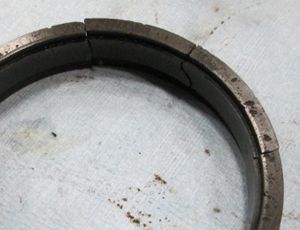
 You might be asking yourself, “why are my seals failing so fast, and how can I prevent this from happening?” This topic rings true among operators and engineers in plants of all sizes and industries. A mechanical seal is often a "barometer" for the pump, helping maintenance and operators understand the health of the pump on which it's installed. Other times, failure is a result of poor selection or installation errors. Here are 6 of the most common reasons mechanical seals can fail.
You might be asking yourself, “why are my seals failing so fast, and how can I prevent this from happening?” This topic rings true among operators and engineers in plants of all sizes and industries. A mechanical seal is often a "barometer" for the pump, helping maintenance and operators understand the health of the pump on which it's installed. Other times, failure is a result of poor selection or installation errors. Here are 6 of the most common reasons mechanical seals can fail.
 Skipping initial start-up procedures and installation errors are a big factor when it comes to mechanical seal failure. Improperly starting the pump can cause the motor to trip and the shaft to twist causing orbital movement, resulting in internal parts contact, seal failure, and shortened bearing life. Improperly installing the mechanical seal will cause damage to elastomers (o-rings or boots), along with a wide variety of other issues, as pictured to the right. Mechanical seals can be very sensitive because the faces are incredibly flat. Even a small amount of dirt or oil, even fingerprints, can cause the faces not to align.
Skipping initial start-up procedures and installation errors are a big factor when it comes to mechanical seal failure. Improperly starting the pump can cause the motor to trip and the shaft to twist causing orbital movement, resulting in internal parts contact, seal failure, and shortened bearing life. Improperly installing the mechanical seal will cause damage to elastomers (o-rings or boots), along with a wide variety of other issues, as pictured to the right. Mechanical seals can be very sensitive because the faces are incredibly flat. Even a small amount of dirt or oil, even fingerprints, can cause the faces not to align. A mechanical seal flush plan must be properly in place. No mechanical seal recommendation is complete without a coordinating flush plan. Be Aware: if no flush plan exists, dewatered product and contaminants can build up, causing excessive heat or erosion on the seal, resulting in shortened seal life.
A mechanical seal flush plan must be properly in place. No mechanical seal recommendation is complete without a coordinating flush plan. Be Aware: if no flush plan exists, dewatered product and contaminants can build up, causing excessive heat or erosion on the seal, resulting in shortened seal life.Tom Borrino, Regional Engineer for John Crane, recommends that if you’re interested in reducing seal failures, take a look at all phases of equipment application – how is the sealed equipment specified, installation practices, all the way up to operations. Seals are very repeatable, so if you continue operating the same seal, expect to see the same rate of failure in the same manner. He further recommends thinking about the seal in terms of its total lifetime costs – not so much by its initial cost. Start a reliability program that defines the cost of failure and justify it by increasing the seal’s mean time between failures.
Look to your local seal supplier for help with seal selection, best-operating practices, and seal flush plan recommendations. If you have specific questions, ask us about them! We gladly provide mechanical seal assistance to businesses in Wisconsin and Upper Michigan.
Read more about the reasons for pump and mechanical seal failure in our eBook, 36 Ways to Kill Your Pump. Download your copy today!
These Stories on Mechanical Seals
Headquarters and Service Center
Located outside Green Bay, WI
707 Ford Street
Kimberly, WI 54136
920-733-4425
OptiFlow Design and Build Center
1002 Truman Street
Kimberly, WI 54136
920-733-4425
Burnsville Service Center
12265 Nicollet Avenue
Burnsville, MN 55337
952-444-1949
Grand Rapids Service Center
26489 Industrial Blvd
Cohasset, MN 55721
952-444-1949
© Copyright 2024. Crane Engineering. All Rights Reserved. Privacy Policy.